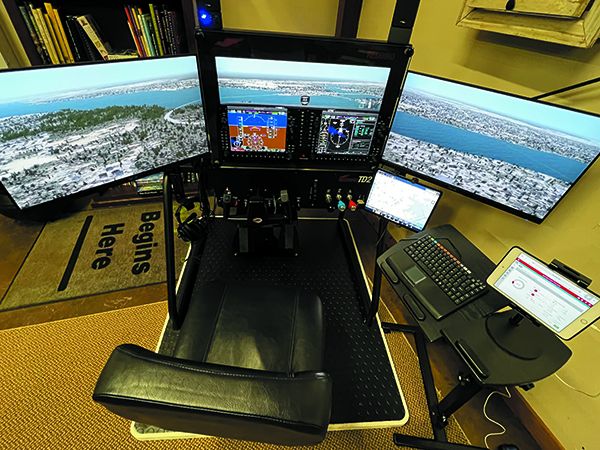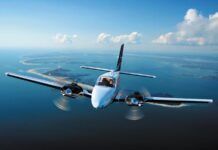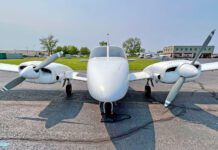REDBIRD SIM FIELD REPORT
I thought you would like a field report on my recent purchase of a Redbird TD2 flight simulator. I fly a G36 Bonanza with Garmin G1000 NXi integrated avionics.
The total cost of the setup delivered to me in Orientat, North Carolina, was $15,635. I bought the expanded screens, table and seat/stand, plus the optional Redbird training units.
Delivered in early December 2021, I hired Mr. Clint Summers of Black Box Flight Training LLC of New Bern, North Carolina (www.blackboxflight.com) to set the Redbird up and get it operational. (Turns out that was a wise decision.) Black Box Flight Training operates a Redbird FMX full-motion simulator, but it uses the same software and controls as the TD2.
There is no way could I have set this unit up myself, but my 13-year-old grandson probably could. Anyway, Clint set it up and got it running in a few hours. Then we discovered a problem that required a computer replacement Naturally this happened over the Christmas holidays.
Redbird spent hours on the phone trying to do remote “fixes.” None worked, so it sent a new computer and it solved the problem. Yes, it was frustrating, but the timing was awful and the staff at Redbird left no doubt they would solve the problem—which they did.
I am a 3500-hour commercial/multi-engine/instrument-rated pilot, and basically a flat-lander here on the East Coast. Now, I fly 100 hours per year, regionally in the Carolinas, Georgia, Florida and Alabama. I do fly in light IFR, generally making approaches to 900-foot minimums. The Bonanza—with the Garmin G1000 NXi—makes it easy. Perhaps too easy.
So with all that, I wanted to sharpen my skills and shoot more approaches to new and different airports in challenging weather. That’s why I bought the Redbird. I looked around and thought about it for three years. When I flew the Black Box Redbird FMX, I was convinced.
It is not an airplane. It is not a Garmin product. But it is close. It is harder to fly than any plane I’ve flown, and the flight controls are sensitive. The G1000 panel has about 80 percent of the realism of the G1000 NXi in my Bonanza. So if you are looking for a 100 percent “real” experience, go to SIMCOM or Flight Safety and you can get closer to the real deal.
The Redbird is easy to use, but the graphics are not like Microsoft Flight Simulator. I’d say they are nearly four generations behind, but they work. I can log time on it, but that isn’t the main point for me. I want to be IFR proficient and comfortable. No doubt this will be a huge help, and I will use Black Box Training to help me get the most out of the training.
Frank Roe – Orientat, North Carolina
We’re preparing a full field report on home simulators for an upcoming issue of Aviation Consumer and need more real-world feedback like this. Let us know what you use and what you think of it.
MORE INSURANCE WOES
Sorry, I have not seen any good news in insurance. I have a 1974 Cessna 310Q twin with 5500 hours total time that’s insured for a $165,000 hull value. I am 77 years old, a former military F-4 pilot, a CFII, have 6500 hours, take an annual IPC even though it’s not required, I average 70 hours per year (no accidents), I’m in perfect health and over last three years my premium rates have gone from $3000 to $5000 through Starr insurance, who will not be renewing me in March. They gave no reason. It looks like they are going to get us out of flying one way or the other.
Eddie King – via email
We asked for reader feedback on recent insurance experiences and these kinds of stories have been common, especially among pilots in their 70s flying twins and turbines. Some have been successful joining on with other insurers, others not so much. Keep the reports coming.





